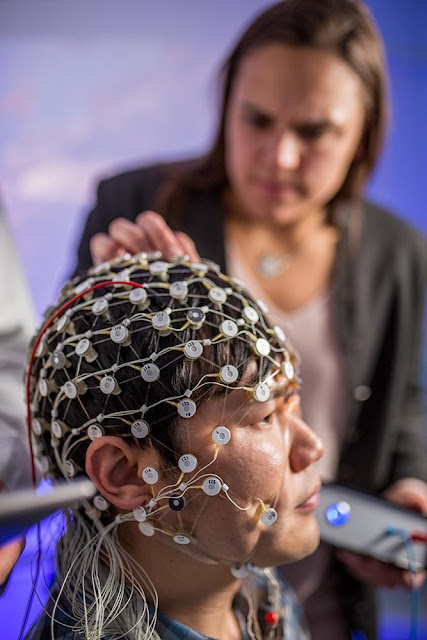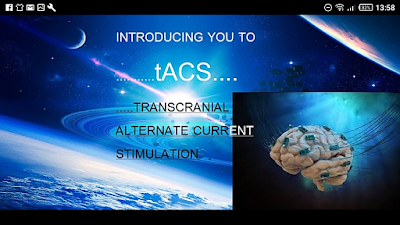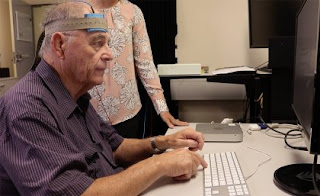After Months of Unconsciousness, 9 People Wake Up After Brain Zaps By Yasmin Tayag on May 12, 2017 Filed Under Science , Biology , Medicine & Science Fiction T he strategy behind transcranial direct current stimulation (tDCS) devices seems hare-brained enough to be science fiction : Stick some electrodes on a human scalp, run low levels of electricity through it, and hope the current reignites dull or absent brain functions by getting neurons excited. The crazy part is that sometimes, it actually works. In a recent study, scientists found that it has the potentially to jumpstart what’s arguably the most important function of the brain — consciousness . They made this discovery by sticking the electrodes on people who, as a result of traumatic brain injury, were in a “minimally conscious state” — that is, they were awake and their awareness flickered (people who are in the more severe “vegetative” state are awake but show no signs of awareness).
Posts
Showing posts from 2019
transcranial stimulation to reduce symptoms of major depression
- Get link
- Other Apps

https://www.facebook.com/187740108029050/videos/395783657927710/?t=2 I just want to catch you up with some recent news items and back on the 20th of March we had a story about researchers who where using transcranial stimulation to reduce symptoms of major depression. This is a technique where a weak alternating electrical current are passed through electrodes on the scalp to stimulate specific parts of the cortex underneath. 70% of the treatment sample reported at least a 50% improvement in symptoms - which is rather incredible.
First demonstration of Real-Time Brain Mapping in a Web Browser
- Get link
- Other Apps
Here, Intheon CTO Christian Kothe (left) wears the Cognionics “Quick-20″ 19-channel dry wireless EEG system, while CEO/CSO Dr. Tim Mullen (right) navigates his brain on a smartphone. All computation is carried out in real-time on the NeuroScale cloud platform. The lightweight web application is built on the NeuroScale API, utilizing just one of numerous possible pipelines for neuroimaging, biosignal processing, brain-computer interfacing, and cognitive state assessment. NeuroScale is the world’s first cloud API platform enabling developers to easily integrate state-of-the-art neurotechnology into any internet-enabled application. Anytime, anywhere. Interested? Apply for the Beta program at www.intheon.io ! Technical Stuff In this example, we demonstrate the most famous of brain rhythms: localized 8-12 Hz alpha (posterior dominant rhythm) power and cortical network activity when the subject closes and opens eyes. Increased alpha activity is associated with blocking of inpu
Brain Stimulation Improves Depression Symptoms, Restores Brain Waves in Clinical Study
- Get link
- Other Apps

https://anycellphone2tdcsdevice.ecwid.com/ UNC School of Medicine researchers led by Flavio Frohlich, PhD, are the first to use transcranial alternating current brain stimulation (tACS) to significantly reduce symptoms in people diagnosed with major depression. With a weak alternating electrical current sent through electrodes attached to the scalp, UNC School of Medicine researchers successfully targeted a naturally occurring electrical pattern in a specific part of the brain and markedly improved depression symptoms in about 70 percent of participants in a clinical study. The research, published in Translational Psychiatry, lays the groundwork for larger research studies to use a specific kind of electrical brain stimulation called transcranial alternating current stimulation (tACS) to treat people diagnosed with major depression. “We conducted a small study of 32 people because this sort of approach had never been done before,” said senior author Flavio Frohlich, PhD, asso
Brain Pong in the School of Neuroscience
- Get link
- Other Apps
While the rest of the country was immersed in the recent basketball tournament, the Virginia Tech School of Neuroscience had their own version of March Madness. Instead of using their physical abilities, NEUR 2036 students went head to head in a PONG tournament using only their brain activity, captured through state of the art Cognionics dry electrode EEG headsets! This new brain machine interfacing lab was thanks to the collaborative forces of the School of Neuroscience’s Dr. Ian Kimbrough and Dr. Sujith Vijayan and Electrical and Computer Engineering master students Naresh Nagabushan and Abhinuv Nitin Pitale. Together with course instructor Dr. Chelsea McCoy, they debuted another exciting new lab to the delight of the students!
The World is Moving around tDCS in primary progressive aphasia
- Get link
- Other Apps

Summary of ""The effect of tDCS on functional connectivity in primary progressive aphasia" NeuroImage: Clinical, volume 19 (2018), pages 703-715." GET YOUR tDCS kit NOW from; https://anycellphone2tdcsdevice.ecwid.com/ Transcranial direct current stimulation (tDCS) is an innovative technique recently shown to improve language outcomes even in neurodegenerative conditions such as primary progressive aphasia (PPA), but the underlying brain mechanisms are not known. The present study tested whether the additional language gains with repetitive tDCS (over sham) in PPA are caused by changes in functional connectivity between the stimulated area (the left inferior frontal gyrus (IFG)) and the rest of the language network. We scanned 24 PPA participants (11 female) before and after language intervention (written naming/spelling) with a resting-state fMRI sequence and compared changes before and after three weeks of tDCS or sham coupled with language therapy.
Recruits sought for study to stimulate the ageing brain
- Get link
- Other Apps

Recruits sought for a study to stimulate the aging brain https://anycellphone2tdcsdevice.ecwid.com/ Cognitive training and brain stimulation study Cognitive training and brain stimulation study8 May 2018 Brain training and stimulation in older adults may be the key to tackling cognitive decline and dementia, according to University of Queensland researchers. Associate Professor Paul Dux and his team in the UQ School of Psychology are looking to recruit 200 healthy adults, aged 60 to 75, to take part in a study on cognitive training and brain stimulation. “The ageing population has been identified as a key global health problem, bringing an increase in age-related disease and disability,” Dr Dux said. “We need to examine and understand ways to prevent cognitive decline and dementia. “Our study is using a form of non-invasive brain stimulation called transcranial direct current stimulation (tDCS), where we pass a very weak electrical current through two e
In Spain, prisoners’ brains are being electrically stimulated in the name of science
- Get link
- Other Apps
In Spain, prisoners’ brains are being electrically stimulated in the name of science A new era of neurointerventions is upon us. Will it improve the criminal justice system or create an ethical nightmare? By Sigal Samuel Mar 9, 2019, 7:30am EST SHARE The use of neurointerventions in the criminal justice system is ethically fraught. Dan Kitwood/Getty Images Finding the best ways to do good. Made possible by The Rockefeller Foundation. A team of scientists in Spain is getting ready to experiment on prisoners. If the scientists get the necessary approvals, they plan to start a study this month that involves placing electrodes on inmates’ foreheads and sending a current into their brains. The electricity will target the prefrontal cortex, a brain region that plays a role in decision-making and social behavior. The idea is that stimulating more activity in that region may make the prisoners less aggressive. This technique — transcranial direct current stimula